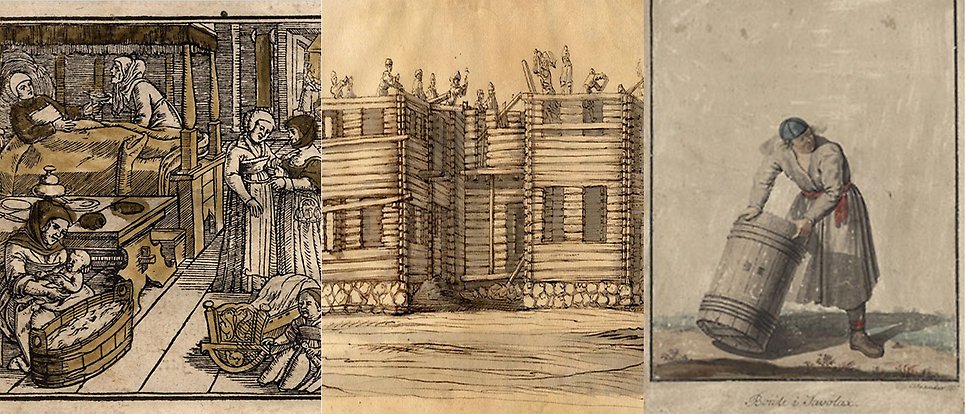New and expanded database on the history of work

The database includes more than 40,000 recorded livelihood activities carried out between 1550 and 1880. Photo: Alvin
The Gender and Work (GaW) research and digitalisation project is launching a new version of its GaW database. At the same time, a wealth of new data from 1720 to 1880 will be made available to all those interested.

Jonas Lindström, research manager at GaW. Photo: Mikael Wallerstedt
The database is based on research on work and gender in historical times. The database includes more than 40,000 recorded livelihood activities carried out between 1550 and 1880 and a free text search function of more than 7,000 source texts, including court records, diaries and supplications.
“It is a new version in terms of software. The database is new, the web interface and the search tool are all new. But there’s also much more data, about twice as much as before,” explains Jonas Lindström, research manager and the main person responsible for developing the database further.
Extracts from trial transcript
The Gender and Work project has been running for several years. The old database was built during the first sub-project, and now that the second sub-project has been finalised, data from this project is also being released.
“They are extracts from various historical sources that reveal to us what kind of work people have done. But they also tell us many other things. A very large part of this data comes from court records, which could be about anything.”
Its usability is therefore wider than just this project. For historians interested in historical periods, digitised court records are valuable, notes Lindström.
“They give you access to ordinary people and everyday life. It is a type of material that is normally quite difficult to access. You have to be able to read old handwriting and know where to look.”
Interest from linguists
There is interest from linguists, for example, as not many digitised older historical texts are available. The database has also been used by a historian at Stockholm University for a thesis on how people from the 17th and 18th centuries viewed the body.
New research results from the group will also be presented soon.
“The material released now will form the basis of a book that we hope will be published in 2024 by Oxford University Press. We have also written articles on the material.”
He is working on a book about maids and farmhands and appreciates the improved search function.
“When I search for the word 'maid', I get a number of cases to use as a basis. 17th century Swedish is not very consistent in terms of spelling, but there is a solution for that now. It’s possible to perform approximate searches, even with alternative spellings.”
Software needed upgrading
A lot of work has gone into the launch of the database. In this round, ten people worked for five years to label new data, mainly from court records in Västerås.
“We’ve gone through 160 years of records and selected the parts that are of interest to us. The first step is to find good cases, then copy them and label them with the people involved and the context.”
Why have you remodelled the entire database?
“The old database was based on software that is not supported by browsers anymore, so we had to remodel it. We were lucky because we had continued funding and the opportunity to remodel. It is a major problem in our industry that databases are built and then die off, so we are extremely grateful that we could do this,” explains Lindström.
Annica Hulth
GaW database
The database is open to all and the website provides a detailed explanation of the data collected there, the selection criteria used in the project and the types of sources used.
Find out more
Gender and Work
